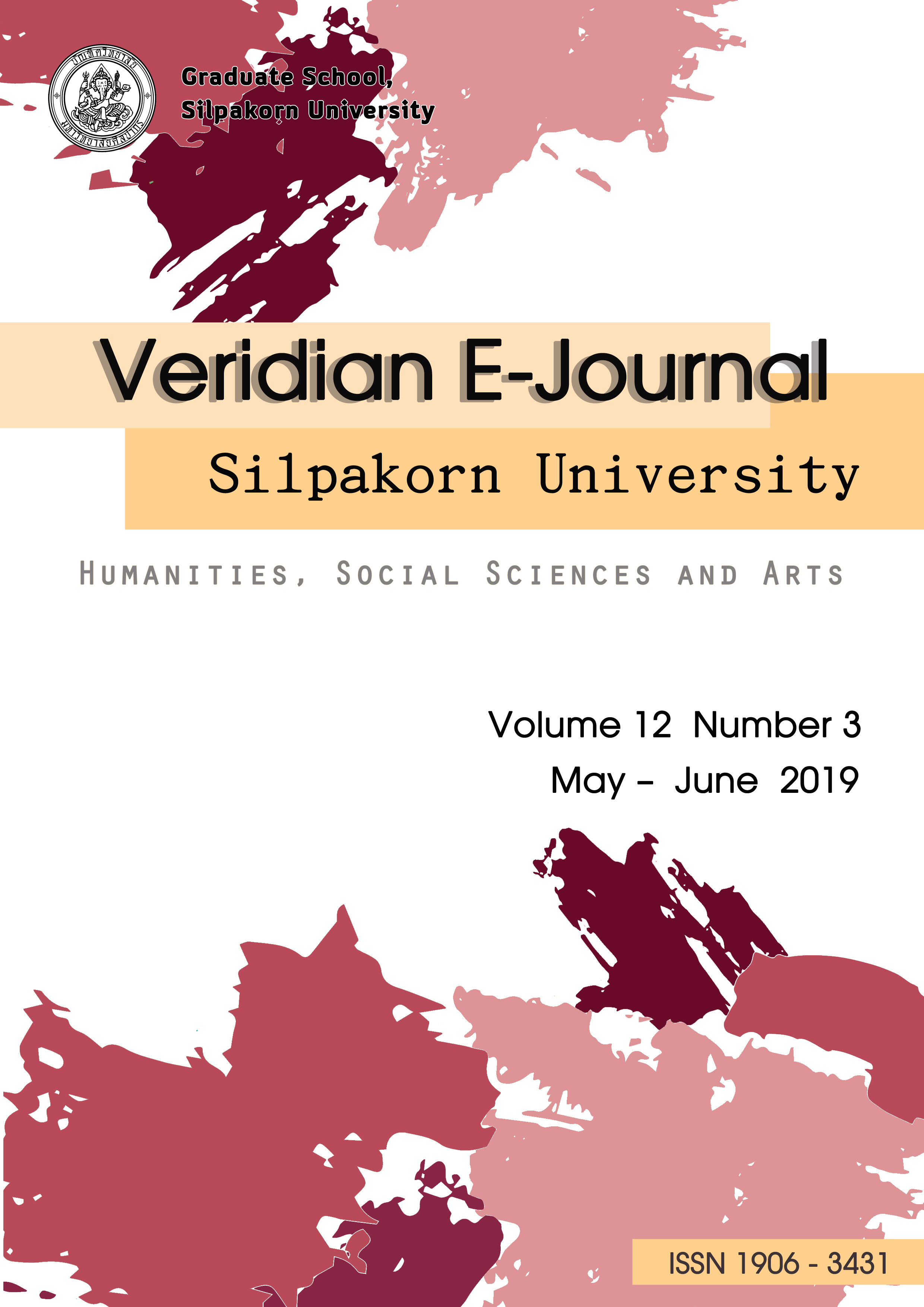การพัฒนาแบบประเมินหน้าที่การบริหารจัดการของสมองฉบับภาษาไทยสำหรับเด็กสมาธิสั้น (The Development Behavior Rating Inventory of Executive Function Thai Version for Attention Deficit Hyperactive Disorder)
Main Article Content
Abstract
การวิจัยนี้มีวัตถุประสงค์เพื่อพัฒนาแบบประเมินหน้าที่การบริหารจัดการของสมอง (The Behavior Rating Inventory of Executive Function: BRIEF) ฉบับภาษาไทยสำหรับเด็กสมาธิสั้น กลุ่มตัวอย่างเป็นกลุ่มอาสาสมัครเด็กสมาธิสั้นในจังหวัดฉะเชิงเทรา ในโรงเรียนฉะเชิงเทราปัญญานุกูล ปีการศึกษา 2561 ใช้วิธีการ การเลือกแบบเจาะจง (purposive sampling) จำนวน 30 คน เครื่องมือที่ใช้ในการวิจัยประกอบด้วย แบบประเมินหน้าที่การบริหารจัดการของสมอง (BRIEF) พัฒนาโดยบริษัท Psychological Assessment Resources, Inc. (PAR) สหรัฐอเมริกา วิเคราะห์ข้อมูลด้วย เทคนิคการแปลภาษา ไปข้างหน้า และการแปลย้อนกลับ การวิเคราะห์คุณภาพเครื่องมือความตรงเชิงเนื้อหา และความเที่ยง
ผลการวิจัยพบว่า
- แบบประเมินหน้าที่การบริหารจัดการของสมอง ฉบับภาษาไทย สำหรับเด็กสมาธิสั้นจำแนกเป็น 3 ด้าน ความยับยั้งชั่งใจ (Inhibition) การควบคุมอารมณ์ (Emotional Control) การปรับเปลี่ยนความคิดและพฤติกรรม (Shifting) มีจำนวน 3 ฉบับคือ ฉบับที่ 1 BRIEF-2 สำหรับผู้ปกครอง มีข้อคำถามจำนวน 63 ข้อ ฉบับที่ 2 BRIEF-2 สำหรับครูมีข้อคำถามจำนวน 63 ข้อ ฉบับที่ 3 BRIEF-2 สำหรับประเมินตนเอง มีข้อคำถามจำนวน 55 ข้อ
- ผลการตรวจสอบคุณภาพความตรงเชิงเนื้อหา (Content Validity) ค่าดัชนีความตรงเชิงเนื้อหารายข้อ (Item-Content Validity Index: I-CVI) มีค่ามากกว่า .78 ทุกข้อ ทั้ง 3 ฉบับ และค่าดัชนีความตรงเชิงเนื้อหาทั้งฉบับ (S-CVI) ฉบับที่ 1 สำหรับผู้ปกครอง เท่ากับ .92 ฉบับที่ 2 สำหรับครู เท่ากับ .94 ฉบับที่ 3 แบบประเมินตนเอง เท่ากับ .96 การตรวจสอบความตรงเชิงโครงการโดยใช้วิธีความเทียบเท่ากัน (Equivalence) ค่าดัชนีเท่ากับ .81
- ผลการตรวจสอบค่าอำนาจ ใช้ค่าสหสัมพันธ์ระหว่างข้อความแต่ละข้อกับข้อคำถามรวมทั้งฉบับ (Corrected Item Total Correlation) ทั้ง 3 ฉบับมีข้อคำถามที่มีค่าสหสัมพันธ์มากกว่า .20 เพียงพอต่อการนำมาใช้งาน ผลการตรวจสอบคุณภาพความเที่ยง (Reliability) ใช้วิธีหาค่าความสอดคล้องภายใน (Internal Consistency) โดยสัมประสิทธิ์แอลฟาของครอนบาค ได้ค่าความเที่ยงเท่ากับฉบับที่ 1 สำหรับผู้ปกครอง เท่ากับ .92 ฉบับที่ 2 สำหรับครู เท่ากับ .93 ฉบับที่ 3 แบบประเมินตนเอง เท่ากับ .94
The purposes of this study were development behavior rating inventory of executive function Thai version (BRIEF Thai version) for attention deficit hyperactive disorder (ADHD). The sample were group of ADHD volunteers in Chachoengsao Province who studied in Chachoengsao Panyanukul School, academic year 2018. Using purposive sampling of 30 peoples.
Research tools include Behavior Rating Inventory of Executive Function, Second Edition (BRIEF2) by Psychological Assessment Resources, Inc. The original version of BRIEF2 was translated into Thai then back -translation to tested and adapted. Data were analyzed by validity and reliability.
The results showed that.
- Behavior rating inventory of executive function Thai version (BRIEF Thai version) for attention deficit hyperactive disorder (ADHD) classified into 3 aspects, Inhibition, Emotional Control, and Shifting. There are 3 issues, namely, No. 1 BRIEF2 for parents has 63 questions. No. 2 BRIEF2 for teachers has 63 questions and No. 3 BRIEF2 for self-assessment has 55 questions.
- Content Validity Inspection Results Item-Content Validity Index: I-CVI were higher than .78 all 3 aspects, and the content validity index (S-CVI), No.1 BRIEF2 for parents is equal to .92, No.2 BRIEF2 for teachers equal to .94 and No.3 BRIEF2 for self-assessment form equal to .96.
- Reliability Inspection Results the power of classification by using the correlation between each message and the corrected item total correlation. All 3 issues were questions that have more correlation than .20 sufficient to be used fullness by using. Internal Consistency by Cronbach's alpha coefficient get the confidence value equal to .83.
